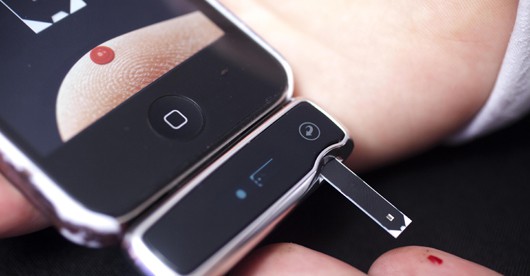
Sanofi is in the process of building on its experience developing the iBGStar iPhone compatible blood glucose monitor to move into a second phase of development.
This will see the pharma company aim to expand its reach to patients, connect them to healthcare professionals and take their use of mobile technology to a new level.
“We need to be more device agnostic, so our monitors can work on more platforms and offer more functionality, [like] joining up data,” Sanofi UK’s brand lead for blood glucose monitoring Jason Lovatt, told PMLiVE at Digitas Health Europe‘s annual digital leadership event ThinkDigital in June.
“There are two distinct areas that we want to improve in. One is to be able to work on more mobile devices – and the lesson we learnt is to avoid a physical connection between the device and monitor – and the second one is to have a more joined-up approach.
“We need to think more multi-platform, linking up the healthcare professional’s office to the patient, combining a desktop, laptop and smartphone approach and be more akin to a telemedicine project than a standalone device,” he added.
Sanofi’s iBGStar launch
The iBGStar generated strong media interest and consumer uptake when it was launched last year as the first blood glucose monitor to sync with Apple’s iPhone and iPod Touch.
“The thing that surprised me is how quickly it took off,” Lovatt said. “We achieved a much higher-than-anticipated level of sales very quickly and it really raised the bar in the consumerisation of the category.
“We still get quite a lot of spontaneous awareness of iBGStar and within this [pharma] space, iBGStar is held up as a good example and that was really something that we wanted to establish.”
Underpinning the product was its twin associations with Apple and UK retail pharmacy chain Boots, with which Sanofi had an exclusive sales arrangement.
This twin ‘halo effect’, combined with an innovative product, “really played a big part” in the success of the iBGStar, Lovatt said.
The company’s media work has been recognised as excellent too, most recently winning a highly commended at this year’s Communiqué Awards for excellence in innovative media outreach.
Empowering patients to test
Looking back on the iBGStar’s debut in 2012, Lovatt said the device was “an opportunity to see how mobile technology and marketing fit together”.
“It’s a very tangible thing and something the industry could do with taking further in terms of looking at how mobile works and then really linking it to products, rather than it being something that is done at a localised level in a country to do disease awareness or tracking.”
The product’s development followed a fairly traditional path, in terms of conducting pre-launch healthcare professional advocacy work, seeking patient and nurse feedback. The challenge, Lovatt said, was to decide how the technology could be beneficially “embedded into a brand strategy at a global level”.
“What we tried to do with iBGStar was to empower patients. The company also wanted to tie the device to something that people feel a real affinity for in the shape of their phones.
“I keep my iPhone on my bedside table and it’s the first thing I check in the morning when I wake up,” said Lovatt, voicing behaviour that will be familiar to many a smartphone owner.
“If you can apply some of the love that people feel for their phones to something like blood glucose testing, which they don’t like doing, then that’s got to be a good thing.”
Taking a decision to innovate
Although keen to get their new product to market as quickly as possible, Sanofi began work on the iBGStar three years ago at a time when there was a lot of flux in the telecoms market.
“Looking back then, Apple was a very clear and distinct brand and the iPhone was clearly ahead of everyone else. We had to go with the phone that had the most stable connection and the most stable technology,” Lovatt explained.
Subsequently the rise in popularity of Android-based Samsung phones has certainly turned it into a major brand, but for Sanofi it was important to make a decision and pick a technology to go with for the first phase of this project.
When it comes to what the company learnt from the project and can bring to bear on the iBGStar’s next phase of development, Lovatt said there were a number of lessons.
Now the company wants to be more device agnostic, avoid a physical connection – looking instead to technology like Bluetooth, and aim for a multi-platform approach.
“So, iBGStar was a good toe in the water for us to see what we could bring to the market. The feedback we’ve had has been really positive and there are a lot of patients using it. The iBGStar is also often given as an example of how pharma can be innovative.
“That’s something we really set out to do at Sanofi – to try and show that we could bring something new to diabetes. We’re very well known within the diabetes area for our insulins and for other drugs that we have, but this was something different.”




